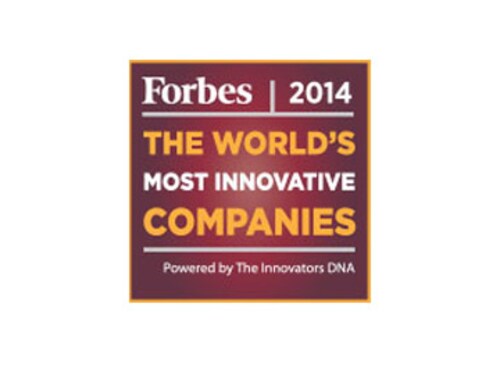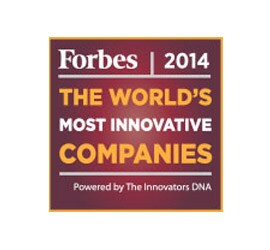The World's 100 Most Innovative Companies


 Innovation rankings shouldn’t be a popularity contest with editors throwing darts at the wall. Our method relies on investors’ educated hunches as to which firms will continue to create profitable new growth. This is captured in an Innovation Premium (IP), the difference between a firm’s enterprise value and a net present value of cash flows from its existing businesses (based on analysis from Finstra Consulting in collaboration with Innovators DNA and using data and a proprietary valuation model from Holt, a division of Credit Suisse). This year’s list is a diverse stew of luxury goods, retailers, food staples, engineering and IT services. One-quarter of the companies are from Asia, but the US dominates the list. Companies need seven years of public financial data (and $10 billion in market cap) to make the list, which is why some obvious candidates such as Facebook and Tesla Motors are not on it this year. Spoiler alert: Tesla will likely be number one next year (its IP is 80 percent) unless it really falls of a cliff over the next five months. We require a threshold of R&D spending so banks don’t make the cut. Nor do energy and mining firms, whose market value is tied more to commodity prices than to innovation. One big caveat is that our method does not correlate with subsequent investor returns because today’s value already incorporates these expected improvements in financial performance.
Innovation rankings shouldn’t be a popularity contest with editors throwing darts at the wall. Our method relies on investors’ educated hunches as to which firms will continue to create profitable new growth. This is captured in an Innovation Premium (IP), the difference between a firm’s enterprise value and a net present value of cash flows from its existing businesses (based on analysis from Finstra Consulting in collaboration with Innovators DNA and using data and a proprietary valuation model from Holt, a division of Credit Suisse). This year’s list is a diverse stew of luxury goods, retailers, food staples, engineering and IT services. One-quarter of the companies are from Asia, but the US dominates the list. Companies need seven years of public financial data (and $10 billion in market cap) to make the list, which is why some obvious candidates such as Facebook and Tesla Motors are not on it this year. Spoiler alert: Tesla will likely be number one next year (its IP is 80 percent) unless it really falls of a cliff over the next five months. We require a threshold of R&D spending so banks don’t make the cut. Nor do energy and mining firms, whose market value is tied more to commodity prices than to innovation. One big caveat is that our method does not correlate with subsequent investor returns because today’s value already incorporates these expected improvements in financial performance.
Click here for The World's 100 Most Innovative Companies List
First Published: Sep 26, 2014, 06:09
Subscribe Now